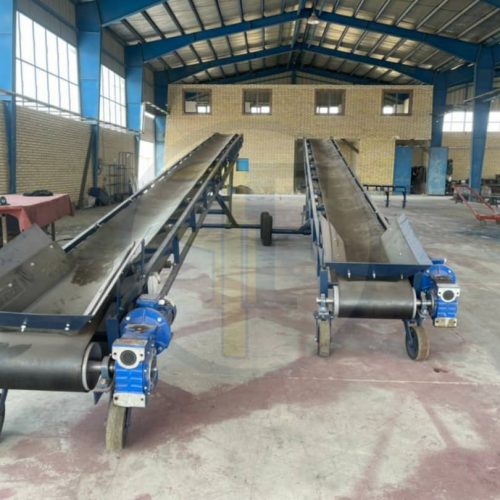Product Name:
Conveyor BeltBrand Name:
Conveyor SystemApplications:
This equipment can transport all kinds of materials with various shapes, sizes, and weights, including:Materials used in asphalt and concrete factories
Cans and bottles, such as various types of sauces and tomato pastes
Various automotive components
Scrap iron and metal alloys
Structure and Operation:
In its simplest form, the conveyor belt device consists of a pair of rollers, one of which is powered, with an endless conveyor belt stretched between them. The construction of the conveyor belt device is designed for short-distance conveying. However, for longer belts, idlers are used along the length of the belt. The drive unit typically consists of an electric motor, a gearbox, and a coupling. Different Arrangements of Conveyor Belts: Conveyor belts can have different profiles and paths. To manufacture a conveyor belt, the following information must be accessible, which will be fully explained in various articles and materials:Conveyor Belt Structure Characteristics of the transported materials Basic design parameters Conveyor belt calculations The conveyor belt consists of various components listed below, each of which will be explained: Conveyor Belt Structure:
1- Belt
2- Idlers
3- Conveyor belt drive equipment
4- Rollers
5- Belt tensioning devices
6- Cleaners
7- Loading the conveyor belt
Control Systems:
Installation and implementation of various control systems on conveyor belts at the request of customers include:Installation of various sensors such as optical sensors, reflective sensors, inductive sensors, and microswitches
Implementation of weighing systems
Implementation of speed and speed control systems with inverters
Precise position control system implementation for conveyors
Installation of various digital counters and conveyor digital counters



